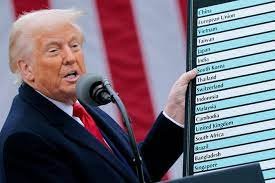U.S. President Donald Trump‘s self-imposed trade deadline passed this week, few bilateral agreements were finalized, raising concerns among economic observers and global stakeholders. Trump’s widely publicized push for “America First” trade realignment appears to have delivered more uncertainty than clarity, prompting regions around the world to chart independent courses.
Stalled Negotiations and Shifting Priorities
Despite months of bold declarations and tight timelines, the anticipated wave of finalized trade deals failed to materialize. According to sources close to the Trump-aligned political action committee, negotiators struggled to gain consensus from partners wary of abrupt tariff changes and potential breaches of prior multilateral commitments.
Meanwhile, the global response has been decisive—but not in Trump’s favor.
Asia: Fortifying Regional Economic Pacts
Countries across Asia have accelerated efforts to deepen intra-regional cooperation. Notably, members of the Regional Comprehensive Economic Partnership (RCEP) have reaffirmed commitments to tariff reductions and streamlined customs procedures, especially in technology and manufacturing sectors.
In parallel, China, Japan, and South Korea are reviving talks around a trilateral free trade agreement, with insiders citing “a common interest in insulating Asia from U.S. unpredictability.”
Africa: Driving Toward Economic Self-Reliance
In Africa, governments have taken the uncertainty as a cue to double down on local production and pan-African commerce. The African Continental Free Trade Area (AfCFTA) has gained momentum as more countries implement industrial incentives to reduce dependence on external partners.
South Africa and Nigeria, two of the continent’s largest economies, are investing heavily in energy independence and agricultural processing to mitigate supply chain disruptions tied to the U.S.
South America: Redefining Export Markets
South American nations are strategically reorienting their export destinations away from the United States. Brazil and Argentina are enhancing trade ties with the European Union and ASEAN, while also nurturing new markets in Africa and the Middle East.
Export diversification strategies—especially in agriculture, lithium, and rare earths—are gaining policy support across the region.
Global Response Reflects Waning U.S. Trade Influence
Trade analysts note that while Trump’s approach was designed to rebalance perceived unfairness in U.S. trade relations, the outcome has been a fragmented global landscape—one where former allies move ahead without Washington at the helm.
“The world is adapting,” said Dr. Marcia Thornton, a trade expert at Georgetown University. “Trump’s tactics might score political points domestically, but the long-term shift may be away from U.S.-centric trade.”
Looking Ahead
With U.S. elections on the horizon and Trump seeking a return to the presidency, the future of American trade remains uncertain. What is clear, however, is that many global partners are no longer waiting.
Their message is implicit but firm: if America pivots inward, the rest of the world will keep moving forward.



